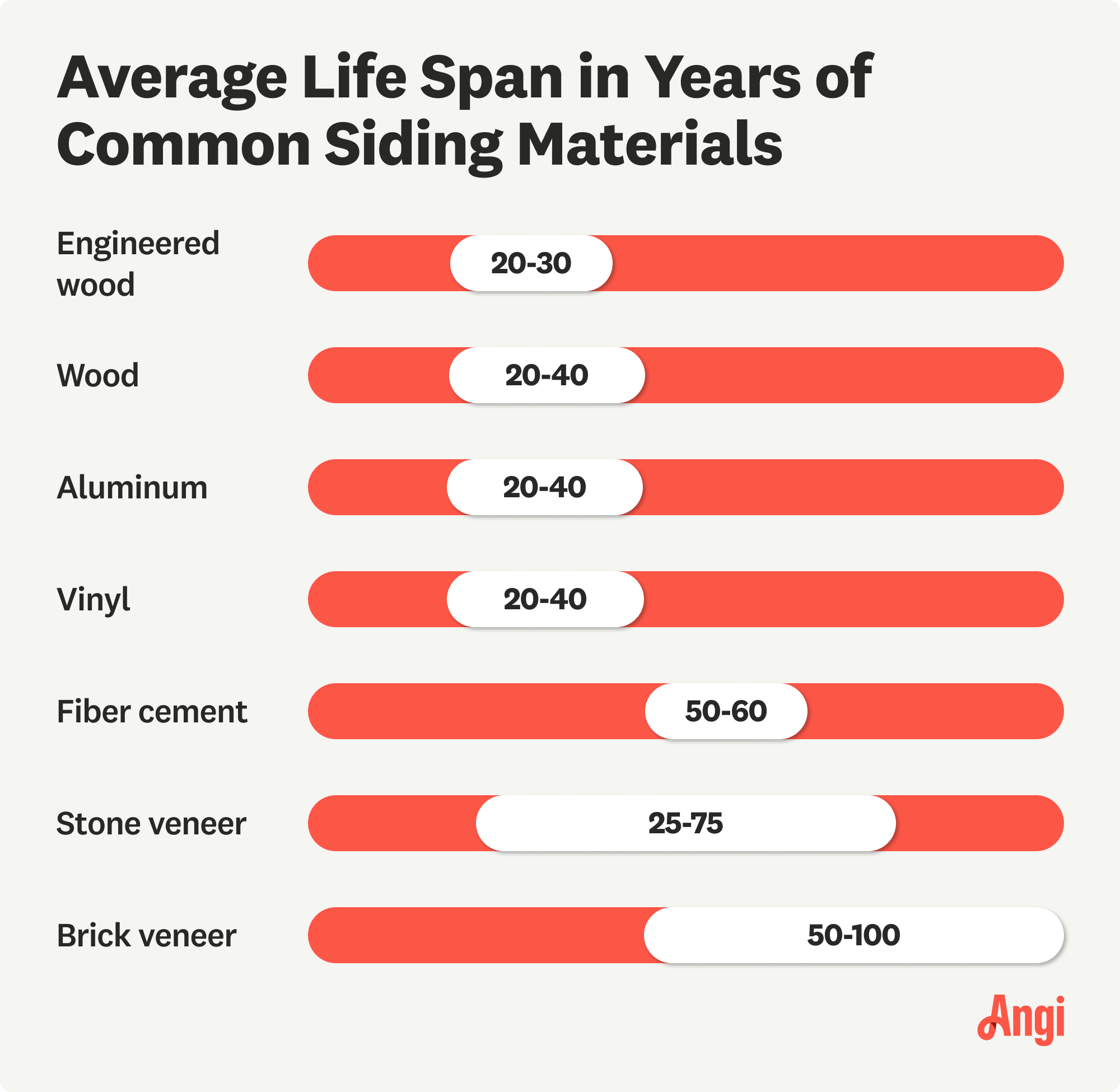
Need to get rid of lingering smoke odors in your home? Learn how much smoke remediation costs to budget accurately for this major undertaking.
Don't freeze up if hail strikes your siding; follow these tips


The average cost to replace or install siding is $11,500 when hiring a pro, but they can help avoid costly errors.
Pros can replace damaged siding much faster than DIYers, which means you’ll have immediate protection against water damage.
DIYers might not have the right ladders to inspect and replace siding on multi-story homes, while pros can always reach these spots.
A local siding repair professional will have multiple sources to find matching siding for repairs, while homeowners might struggle to locate the right materials.
It’s tough to see your house get pummeled during a hail storm, especially when you’re left with siding damage that could cause bigger problems. Learning how to address hail damage to siding is the first step to restoring your home’s exterior to its former glory. Let’s dive into top tips for dealing with hail damage on siding.
While you can install siding yourself, we recommend contacting a pro. Improper installation can decrease the lifespan of the siding and cost more money in the long run.
Hail can damage siding by causing cracks, chips, and holes in it. This type of incident also makes the structure vulnerable to potential water damage. Vinyl siding is the most susceptible to hail damage because it is made from softer materials. However, large hailstones combined with strong winds can still cause extensive damage to other siding types, too. So, it's essential to always inspect the siding for hail damage and have it repaired or replaced by a local siding repair professional as soon as possible.
First things first: If you haven’t already done so, take a walk around your home and look for hail damage on your siding. Take note of any damage you find. It’s best to do this in the late afternoon or early evening when the sun isn’t too bright, or it will cast shadows and obscure certain details.
Hail damaged siding may look like:
Dents
Holes
Cracks
Chipping
Warping or buckling
Punctured siding
Be sure to take plenty of pictures as well—they will come in handy when you work with your homeowners insurance company.

So, is it better to repair or replace siding when it's damaged by hail? Well, it depends on several factors, such as the extent of the damage, the type of siding, and its age. You should also consider whether it will cost as much to repair as it will to replace it altogether and whether your homeowner's insurance policy covers it. The cost of replacing or installing new siding costs $11,520 on average, depending on the type of siding, home size, and labor costs.
If you want to add value to your home, you may want to replace the siding with a type that has a higher ROI. It may be worth getting the opinion of a siding repair professional to help you determine whether you should repair or replace hail-damaged siding.
Here’s what to do when hail damages the siding of your home:
Even if your insurance company assigns someone for you, it’s still a good idea to get an estimate from a siding contractor near you. An impartial estimate from an independent party is helpful for comparison purposes. Contractors and insurance companies often use the same software to determine the cost of the damage, so the estimates should be similar.
While insurance companies determine the scope of the work and cost, you should ensure you’re getting the best deal possible under your homeowners insurance policy. In most cases, your insurance will cover replacement siding for each side of the home that got damaged, but you might get more if you know what to look for in a policy.
For example, if there aren’t any replacement options that match your home’s existing siding, you don’t necessarily have to pick one of them. Your policy could include an extra provision (called an endorsement) that would allow you to redo the whole house, even if only one area sustained damage.
One of the most important tips is to not wait to deal with hail damage to your siding. It’s important to either repair your siding or seek a full-on replacement, as holes can trap water and create a breeding ground for mold and mildew. Cracks can also worsen over time, making the situation worse. You might even have to deal with extra drafts in your home—and higher energy bills as a result.
If you think you have a hail-damaged roof, the same advice applies: don’t delay. Assess the damage and arrange for repairs before a little damage turns into a lot of damage.
It’s also important for insurance companies to know as soon as possible that your home’s been damaged by hail. Some policies even set a time limit for how long you can wait to make a hail damage claim (usually a year). Acting right away will protect both your roof and your wallet, saving you from big out-of-pocket costs you’d face by waiting too long.
Replacing your siding costs around $11,500 on average, but prices vary based on the type of siding, as well as the size of your home. While it’s a big investment, if there were existing issues like warping, rot, or other siding problems, then you’re likely better off with a full replacement. Plus, replacing your siding can protect your home from hail for years to come, depending on the type of siding you choose.
Fiber cement siding is one of the most durable options, although it typically comes with a higher price tag than, say, vinyl. This siding type is made of a blend of cement, sand, and plant fibers, which combine to create a rock-solid surface that’s super resistant to hail. Whole-house fiber cement siding costs $2 to $15 per square foot and can last up to 50 years.
Other siding options that may suit your budget or aesthetic include natural or engineered wood, stucco, and brick or stone veneer.
Choosing the best siding for your home involves weighing the pros and cons and taking into consideration all of your options. Your budget, location, local climate, and home style will influence your siding choice, so balance price against durability and life span when deciding whether to replace your home’s siding. If you live in a storm-prone area, you might consider the cost of a tornado shelter, too, as you’re weighing your options.
After a hail storm, homeowners should absolutely conduct their own initial inspections to assess damage. If you spot damage and intend to have your siding repaired or replaced through homeowners insurance, however, you’ll need to submit a claim and coordinate a professional siding and roof inspector near you to assess the damage and make a plan to address the issue.
Regardless of whether you’re going through insurance or not, we highly recommend working with a local hail damage repair expert to fix or replace your siding, instead of attempting to do it yourself. Such a project—particularly replacing your siding entirely—is complex, takes multiple days, and includes various risks. If the hail damage is minor, you may be able to replace the siding yourself, but only if you’re comfortable with DIY tasks.
From average costs to expert advice, get all the answers you need to get your job done.

Need to get rid of lingering smoke odors in your home? Learn how much smoke remediation costs to budget accurately for this major undertaking.

Fixing a slab leak requires finding the leak, digging a trench, breaking the slab, pipe lining, and more. Keep reading to learn how to fix a slab leak.

Fire damage restoration costs vary widely based on the extent of the damage. Learn how to assess your home and estimate your total after a fire.

Learn how smoke can impact your home and health, and explore effective strategies for cleaning and prevention

A water leak in your house is definitely a cause for concern. So, how do you know who to call for a water leak in the wall? Read this guide to find out.

How do you know what to throw away after smoke damage? This guide will tell you what can be salvaged after a house fire.